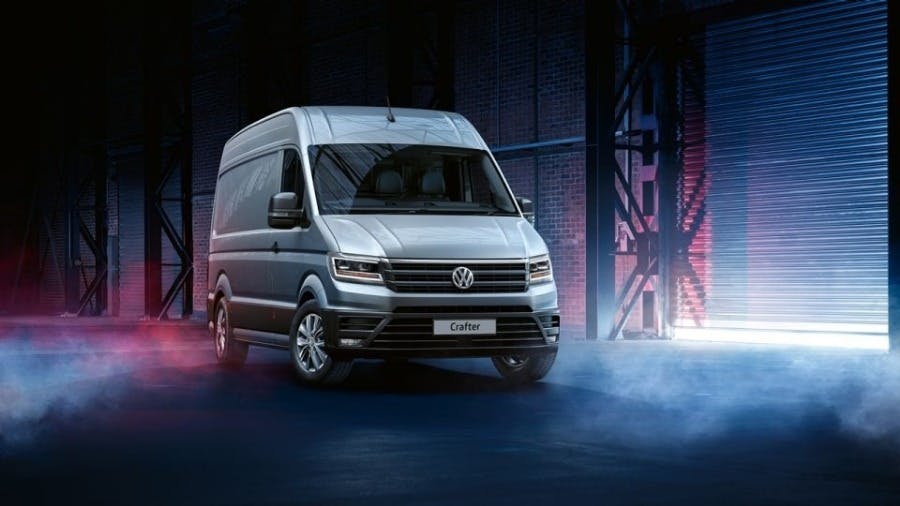How to Improve your Van's Fuel Economy

Top tips on how you can maximise your fuel economy whilst driving your van.
-
The most frequent outgoing you are going to have when owning a van is paying for the fuel. With the price of Petrol and Diesel rapidly increasing, it means more and more of your expenses are going on fuel every week.
Although it is unfeasible for business users to upgrade their van to a more efficient one every time to price of fuel goes up, we have some top tips to help you go further on a tankful, helping to keep your bottom line looking healthy in the process.
The vast majority of vans and light commercial vehicles in the UK are now diesel, and if you are looking for a pick-up truck, every single one sold in the UK is diesel - If you would rather a petrol, you would need to import one from the USA.
The vans that offer petrol do tend to offer low payload capacity and not so much pulling power.
However, Volkswagen is now offering its TSI Petrol engines from its road car range in the Caddy and mid-sized T6 Transporter alongside the diesel variants.
While they cannot quite match the diesel for ultimate fuel economy they are very suitable for urban van drivers who may be conscious of the extra particulates and gases which are emitted by diesel vans. -
Clear the Clutter
When using a van on a daily basis, you will likely see that it will quickly fill up with clutter. The cab will be a place full of food, drinks, papers and all sorts of rubbish,
while the back of the van can easily end up full of off-cuts, spare parts and other waste that would not be needed on site.
All this clutter will not only be annoying but it will also add unnecessary weight, which will have a negative impact on your fuel economy.
Take some time during the week to give your van a clear out, and while it might not save much, it will help fuel economy.
If you have payload that needs transporting elsewhere, try and do this as soon a possible, as driving around with extra weight will most likely have a bigger impact than you might imagine. -
-
Anticipate The Road Ahead
As you are driving, always keep an eye on the road ahead and be prepared for any situations that may occur.
If you see traffic slowing down in front of you, lift the throttle early and carefully and slow down gradually and slowly press your break, because the smoother you break the less fuel you will burn.
A good way to practice slowing down slowing is by anticipating traffic lights. If you see a red light ahead, see if you can time it so you don’t have to stop, by approaching them slowly. It is harder work for your engine to move a stationary van than it is to speed up a van that is already moving. This will save fuel and you will have a much smoother drive too. -
-
Use Stop-Start
The majority of new vans now feature a stop-start button that cut out the engine when you are stuck in traffic. To do this, simply put your van into neutral or press the brake pedal hard on a van with an auto gearbox and the engine shuts off. Put the van back into gear (or lift your foot of the break) and the engine will fire up again before you are ready to pull away.
These systems may not always work though, they might not operate if it's too cold or if the air-conditioning is on full blast but they do save a healthy amount of fuel when they are in use.
If your van doesn’t have a stop-start, you can still use the same method to save fuel. Simply switch off the ignition when you're stuck in traffic and you will be saving fuel. It might be a bit of a chore, but you are bound to see the benefits at the end of a busy week. It's only worth shutting off the engine if you’re likely to be stationary for 15-20 seconds or more for it to be efficient though, so you will have to time it right.
-
-
Get into as High a Gear as Possible
To save fuel it is always best to shift up a gear as quick as possible, because the higher the gear the less revs the engine is holding on to.
Lower revs means less fuel is being pumped into the engine, so you will be getting a fuel saving by not doing much at all.
If you have a heavy payload, then it can be harder to drive in a higher gear. If you need to downshift to help your van get up a steep slope for example, try and get it back to a higher gear as quick as possible. -
-
How to Keep your Van in Shape
Tyre pressure is one crucial part of owning a van that can often be overlooked. Under-inflated tyre will be dangerous especially if you are carrying a heavy load. They will wear at a higher rate and they will harm the fuel economy with their extra rolling resistance.
Optimum tyre pressures can be located on a sticker inside the door frame of your van or in the owner’s manual and there will be different payloads, ranging from empty to full load.
We recommend investing in a tyre pressure gauge and pump, as these will be more accurate than an air pump as a petrol station.
It is also a good idea to keep you van maintained properly with regular servicing. Keep up with the maintenance and your van will be in its best shape and will run much more efficiently.
Over time, soot can build up in diesel engines and can clog up injectors and other parts, which will most defiantly harm your vans efficiency but proper maintenance will keep this in check and avoid it from happening. -






